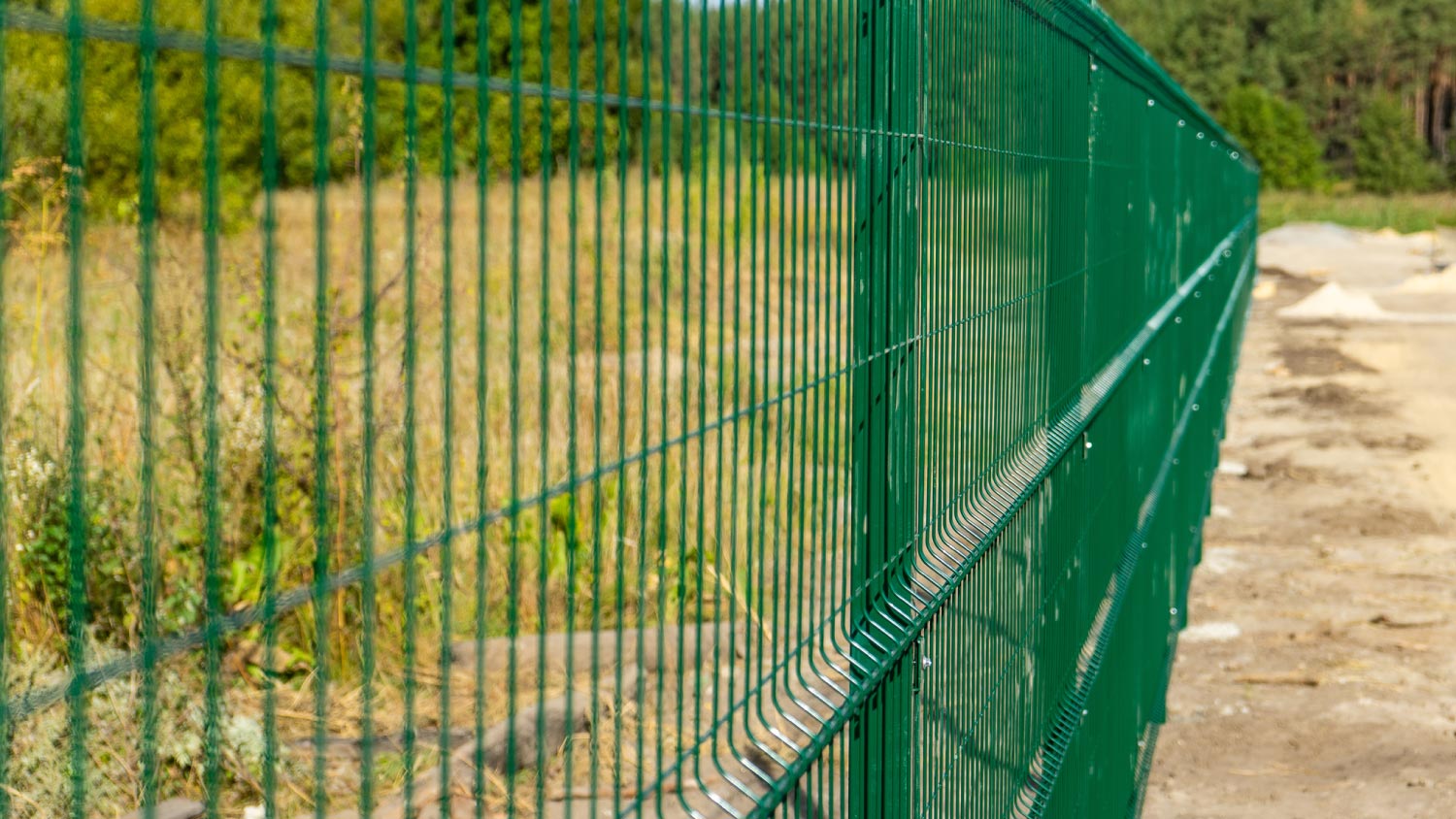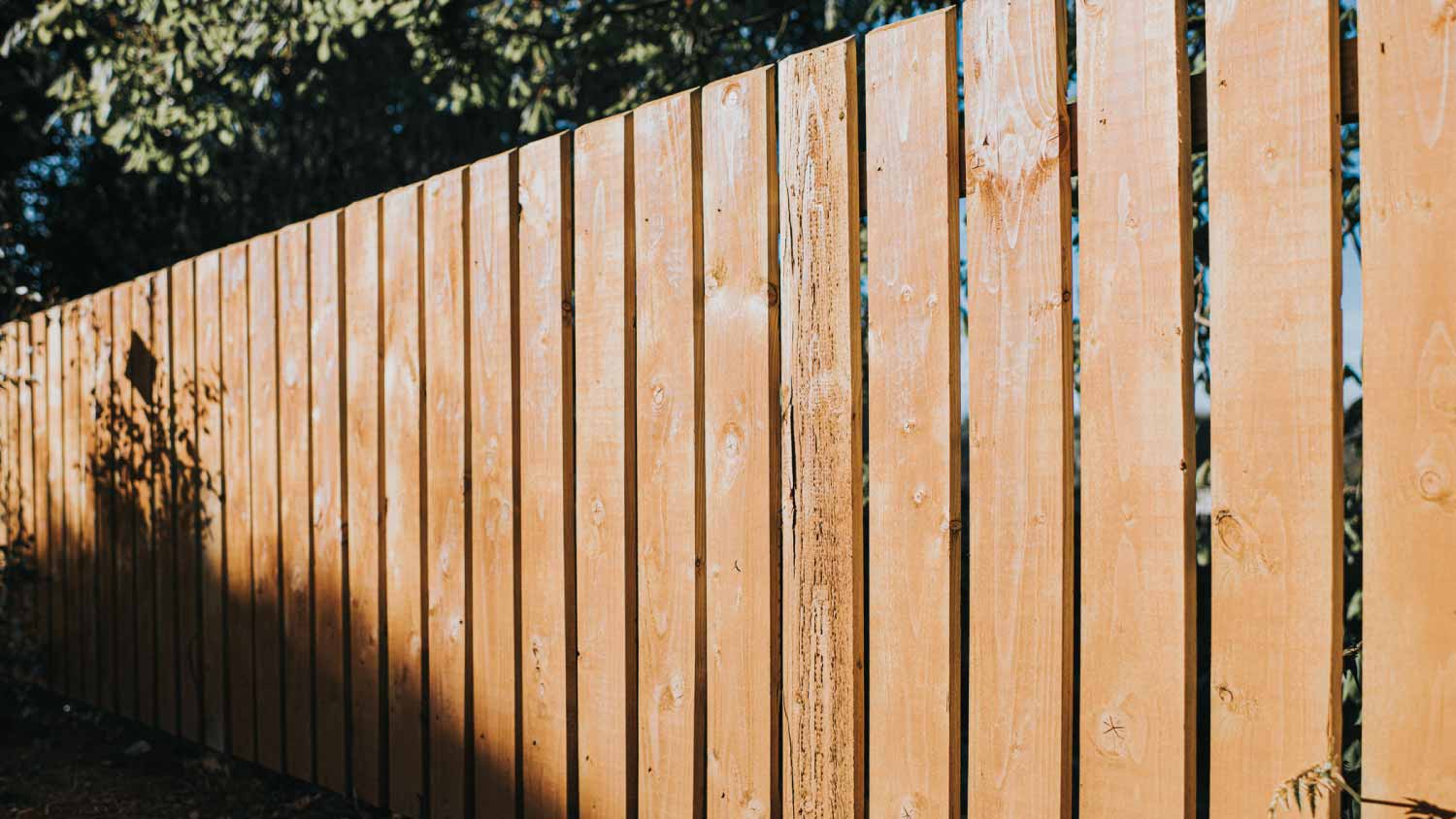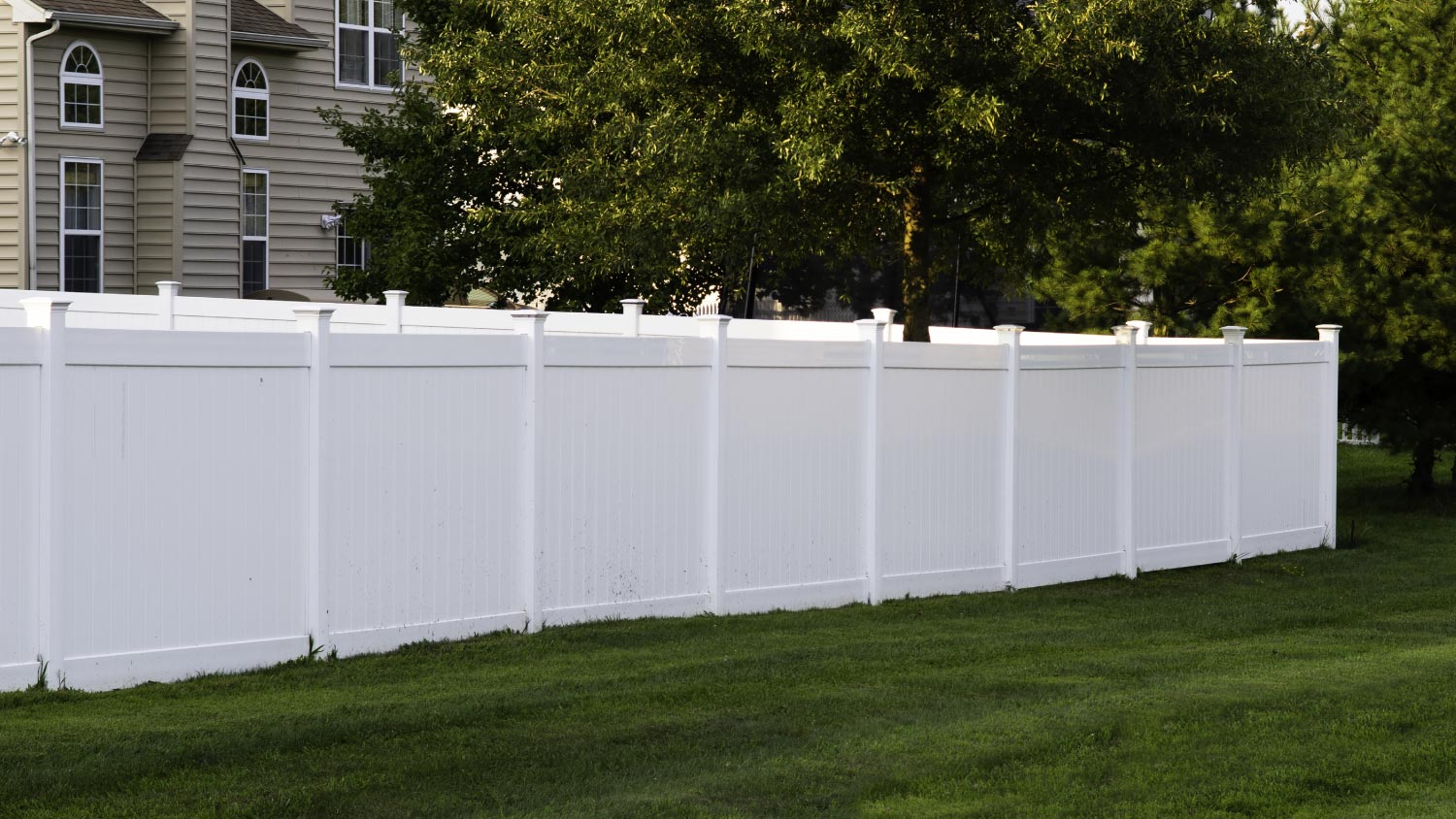
Explore the key factors that impact vinyl fence installation costs in Columbus, OH, including labor, materials, permits, layout, design, and yard conditions.
Deer belong in the wild, not your yard


Deer are beautiful, graceful creatures, but they have no business frolicking through your yard or trampling your flower beds. Assuming you want to protect your property from damage and keep it from becoming a wildlife habitat, you’ll need the proper fence to keep deer out of your garden or yard. From poly mesh garden fence kits to long-term wooden structures, here are a few of the pros and cons of the most common types of deer fencing for gardens.

A metal grid material is one of the most popular types of deer fencing for gardens. Because the grid allows deer to see through it to your tasty-looking plants, it needs to be taller than a deer can jump.
Oregon’s Department of Fish and Wildlife recommends that you install a metal fence that’s a minimum of 6.5 feet tall. However, since most deer can jump at least 7 feet high, many professionals recommend a fence height of 7.5 to 10 feet for a truly deer-proof fence. A good rule of thumb to follow is that the more see-through your fencing is, the taller it should be.
Check your local regulations before building a tall fence. Most cities will allow you to build a 6-foot fence, but special permits may be required for fences over 7 feet. A fencing expert will know all of the laws in your area, so consider calling a local pro.
Additionally, you should make sure the posts you purchase are 18 to 24 inches taller than the actual fence height. Doing so will leave space for you to bury the posts and ensure they act as strong anchor points to hold the fencing in place in case the deer decide to test your handiwork.
| Pros | Cons |
|---|---|
| Durable | Can be expensive |
| See-through | Lower-cost options aren’t aesthetically pleasing |
| Straightforward installation | Must be 7.5+ feet to be effective |
Best for: Homeowners who want to see their yards while protecting them

Polypropylene mesh, often simply called “poly mesh,” is a grid-like, plastic material that you can attach to wooden or metal posts, similar to metal mesh fencing. Many people use poly mesh as a deer fence for garden safety, thanks to its affordability and ease of installation.
Poly mesh for a deer-proof fence should have openings no larger than two inches, or the deer may get trapped or injured. Follow the same height guidelines as those for metal mesh.
| Pros | Cons |
|---|---|
| Less expensive | Not as durable as metal |
| DIY installation | Deer might break through |
| Allows for unobstructed views | Stronger mesh is more costly |
Best for: Budget-minded homeowners

Wood fencing can be effective because it obscures a deer’s view, and deer typically don’t like jumping into an area they can’t see. However, you’ll want this type of fence to have as few gaps as possible to be effective.
| Pros | Cons |
|---|---|
| Effective at shorter heights | Expensive |
| Customizable | Obscures view |
| Offers privacy for yard | Harder to install and maintain |
Best for: Homeowners who want privacy and don’t mind partial views

In terms of deer fencing, vinyl has similar pros and cons to wood, although, per square foot, vinyl fencing costs are lower.
| Pros | Cons |
|---|---|
| Customizable | Blocks view |
| More affordable than wood | Not DIY-friendly |
| Low-maintenance | Less durable than metal |
Best for: Budget-minded homeowners who prefer little ongoing maintenance

When considering a way to keep deer away, chain link fencing might not be the first thing you think of, but it can be effective as long as it’s tall enough. Don’t eliminate chain link fencing as an option because it doesn’t have the appeal of other fencing types. There are many modern styles available nowadays, including non-metal options that have an upgraded look you just might love.
| Pros | Cons |
|---|---|
| Affordable | Not as attractive |
| Offers mostly unobstructed views | Must be 8+ feet to be effective |
| Flexible/partial yard installation | Not DIY-friendly |
Best for: Homeowners with vegetable gardens

Liquid fencing isn’t technically a fence, but in many cases, it can work just as well. You can apply deer repellent to garden borders and even directly on your plants as a deterrent, much like soap can repel bugs and critters in your garden. It contains substances that taste or smell bad to deer but aren’t harmful to your precious plants.
| Pros | Cons |
|---|---|
| Simple installation | Not fool-proof |
| Solution is readily available for purchase | Must reapply, especially after rain |
| Safe for plants, pets, and animals | Ineffective if deer are very hungry |
Best for: Homeowners who want more of a deterrent than an actual fence

Note that this is not an ideal or reliable method for deterring deer, and we don’t recommend it. Electric deer fencing consists of low wires that emit a mild electrical shock. The idea is to deter deer by giving them a mild shock that, well, shocks them but doesn’t injure them.
The most effective way to use electric deer fencing is to place it around plants you wish to keep deer away from or near common deer paths rather than trying to keep them out of your entire yard.
| Pros | Cons |
|---|---|
| Nearly invisible | Deer can adapt to shock |
| Won’t obscure views | Requires a power source |
| Mild shock won’t hurt deer if installed correctly | Needs a licensed pro to install safely |
Best for: Protecting plants or paths
Warning: Poor grounding, faulty wiring, and incorrect measurements can all quickly lead to project failure and potentially cause harm to yourself and others, including deer, due to electric shock.
Deer fencing for a garden or yard isn’t a one-size-fits-all solution. Some options might work better than others. It’s important to think about your unique needs before making your final decision. Are you limited by budget or fence height? Are deer your only pests? Here are some things to consider.
Zoning regulations can limit fence height, which can reduce the effectiveness of certain types of deer fences. Check with your contractor so you can choose the option that works best with any local height restrictions.
If you’re installing a deer fence for your garden or yard on a budget, choose wallet-friendly options, like polypropylene mesh or metal chain link. Also, don’t DIY if you’re not 100% confident. You could end up spending more money in the long run if something goes wrong than you would have by hiring a pro in the first place.
Looking for high durability? Go for a metal fence coated with polyethylene, a vinyl privacy fence, or a fence made from composite wood. Always look for the highest durability materials within your budget and avoid those that don’t have the strength to keep out deer, like chicken wire.
Sometimes it feels like the whole forest is treating your garden as an all-you-can-eat buffet. If you’re dealing with more than just deer, you might want to consider additional pest prevention.
Fences with very small openings or no openings can prevent mice and rodents. Adding wire mesh in a trench at the base of your fence can also prevent burrowing pests from reaching your garden.
Setting up fencing is one of those tasks where a homeowner can save quite a bit by tackling it as a DIY, but only if they’re comfortable with working with the materials. Some deer fencing options, such as metal mesh or poly mesh, are sold as DIY kits at the local hardware store and include straightforward instructions for installation on your own.
Other fencing options, such as electric, vinyl, or chain link fencing, are more advanced, and a homeowner may be better off hiring a local fence installation company.
The installation cost for deer fencing depends on what type of fencing the homeowner chooses. Many factors influence the fence's cost, including material, number of linear feet, number of gates and posts needed, and labor costs. For example, wood fencing costs an average of $17 to $50 per linear foot, while aluminum fencing can cost $17 to $90 per linear foot.
From average costs to expert advice, get all the answers you need to get your job done.

Explore the key factors that impact vinyl fence installation costs in Columbus, OH, including labor, materials, permits, layout, design, and yard conditions.

Shadowbox fencing can boost your home’s appearance and privacy. Use this guide to learn how much it costs to install a shadowbox fence based on factors like material, length, and height.

A fence can be a beautiful and functional addition to your property. Learn all the factors that determine your fence installation costs in Columbus, OH.

What is chain link fencing, anyway? Chain link fencing has a lot to offer, so consider this option when installing a fence on your property.

How deep should a fence post be to keep your fence from falling over? Fence height, frosts, and more affect the depth. Learn more.

If you assumed your hilly yard disqualified you from building a fence, think again. Here’s how to build a fence on a slope, including two ways to do so.